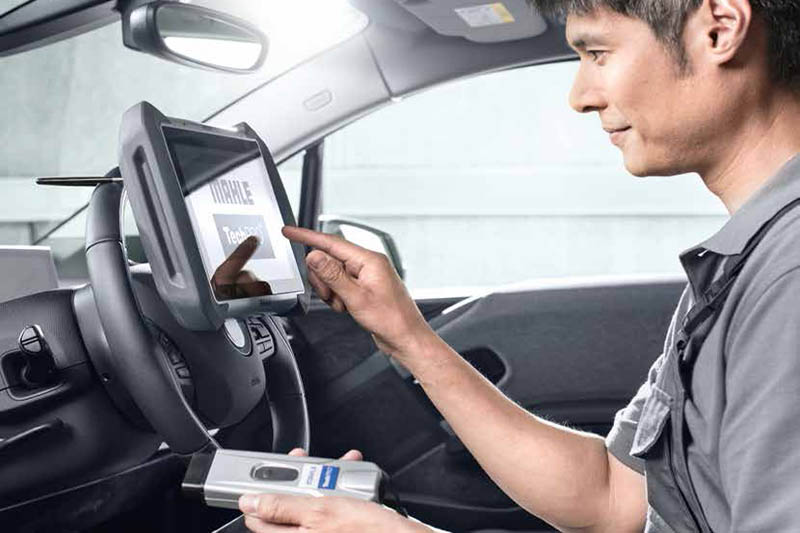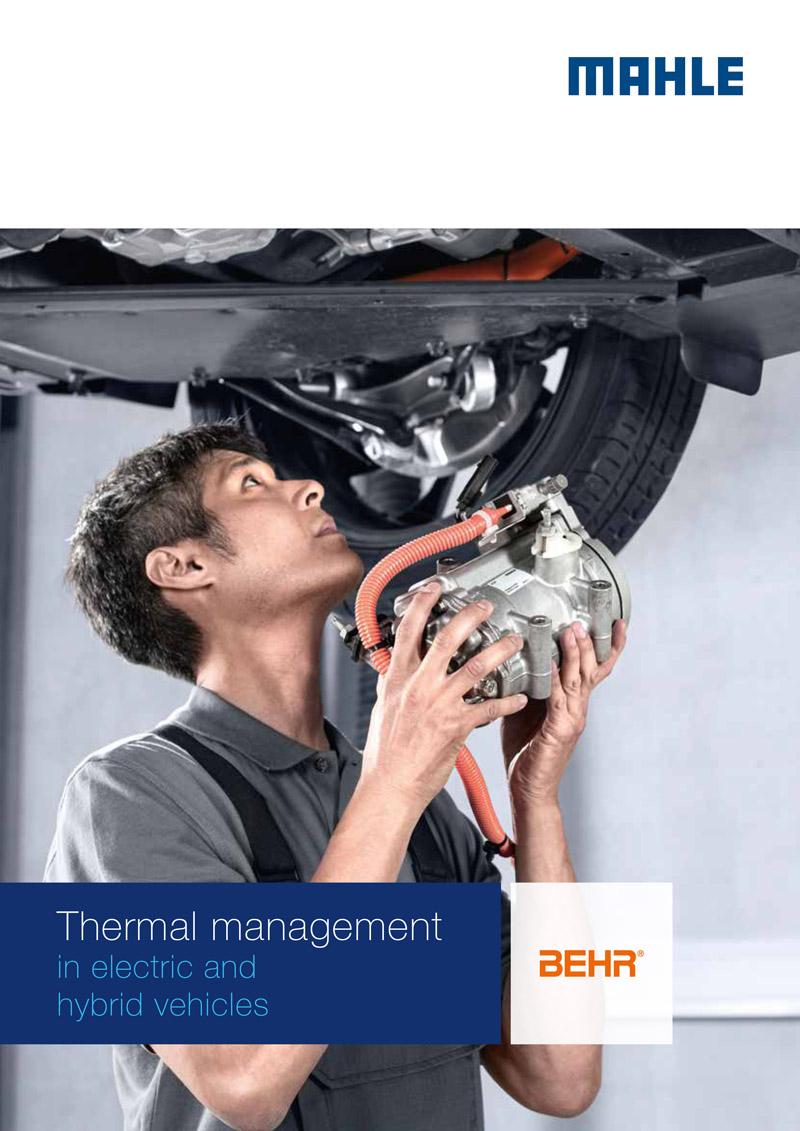
MAHLE Aftermarket UK has announced the launch of a guide for technicians on Thermal Management in Electric and Hybrid Vehicles.
The document looks at the importance of hybrid and electric technologies in the workshop and an overview of hybrid systems and their differences.
Based on a study by management consultants Pricewaterhouse-Coopers, every third new car registered in Europe in 2030 could be an electric car. So, it is no longer a question of whether vehicles with electric, hybrid, or even hydrogen technologies will really catch on. Rather, they will soon become part of everyday life on our roads.
These vehicles will also have to be serviced and repaired and therefore the subject of thermal management will become more complex. The temperature control of the battery and power electronics plays just as important a role in this respect as the heating and cooling of the vehicle cabin.
Air-conditioning components are also required for these types of drive and their importance is even increasing, since the air-conditioning system often has a direct or indirect influence on the cooling of the batteries and electronics.
The MAHLE guide looks at the high voltage thermal systems in electric vehicles and the different types of cooling including a refrigerant based cooling system and coolant and refrigerant based circuit cooling.

Exploring the key components of electric vehicle thermal systems, the MAHLE brochure aims to provide practical tips for technicians working on hybrid and electric vehicles including maintenance and breakdown assistance and towing.
Also covered by MAHLE is interior air-conditioning and the differences of these systems in combustion engines and electric and hybrid vehicles.
Finally, the publication offers insight and diagrams on high voltage air-conditioning compressors for full hybrid vehicles and temperature management of the battery in electric and hybrid vehicles. The battery is essential for the operation of an electric and hybrid vehicle. It must provide the high amount of energy required for the drive, quickly and reliably. Most of these are lithium-ion and nickel-metal hybrid high-voltage batteries. This further reduces the size and weight of the hybrid vehicle batteries.
It is essential that the batteries used are operated within a defined temperature window. Service life decreases at operating temperatures of +40°C or higher, while efficiency drops, and output is lower at temperatures below 0°C. Furthermore, the temperature difference between the individual cells must not exceed a particular value.









